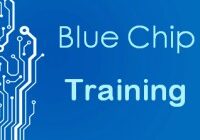 Overview
Overview
This course is divided into 3 main sections and is made up of a mixture of presentations and practical exercises.
- VB.NET Language in Visual Studio 2012
- VB.NET Object Orientation
- VB.NET and Sql Server 2012
Course Outline
Part I. VB.NET Language in Visual Studio 2012
Module 1. Introduction to Visual Basic 2012
- The Object-Oriented Programming
- The Visual Studio 2012 IDE
- Creating a new Application
- Using the Help System
Module 2. The Microsoft .NET Framework
- The .NET Framework Classes
- Executing the Code
- Common Language Runtime
- Code Loading and Execution
- Application Isolation
- Security
- Interoperability
- Exception Handling
Module 3. The Visual Basic 2012 Language
- Data Types
- Storing Variables
- Using Methods
- Making Decisions
- Working with Data Structures
- Using Arrays, Enumerations and Collections
Module 4. Building Windows Applications
- Responding to Events
- Creating the Toolbar
- Creating the Status Bar
- Using Multiple Forms
- OpenFileDialog and SaveDialog controls
- PrintDialog and FolderBrowserDialog controls
- Understanding Menu Features
- Creating Menus
- Context Menus
Part II. VB.NET Object Orientation
Module 5. Building Objects
- Understanding Objects
- Encapsulation
- Methods and Properties
- Managing Events
- Building Classes
- Using Constructors
- Managing Inheritance
Module 6. Advanced Language Constructs
- Using Lambda Expressions
- Using Async and Wait
- Using Iterators
Module 7. Exception Handling and Debugging
- Handling Exceptions
- Try, Catch, Finally
- The Throw Keyword
- The Exit Try Statement
- Using Exit Try Statement
- Using Exception Properties
- Logging Errors
Module 8. Parallel Programming Using Tasks and Threads
- Launching Parallel Tasks
- Transforming Sequential Code to Parallel Code
- Parallelizing Loops
- Specifying the Desired Degree of Parallelism
- Creating and Managing Tasks
Part III. VB.NET and Sql Server 2012
Module 9. Database Programming with Sql Server 20012 and ADO.NET
- The ADO.NET architecture
- The Connection class
- The Command and DataReader Classes
- The ExecuteReader(), ExecuteScalar(), ExecuteNonQuery() methods
- Using Parameterized Commands
- Calling Stored Procedure
- Managing Transactions
Module 10. Data Components and the DataSet
- Building a Data Access Component
- Managing Disconnected Data
- The DataSet Class
- The DataAdapter Class: Filling a DataSet, working with Multiple Tables and Relationships
- The DataView Class
Module 11. Using Data Binding
- Basic Data Binding
- Data Source Controls
- The SqlDataSource
- Inserting, Updating, Deleting and Selecting records
